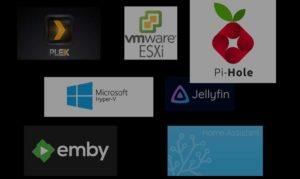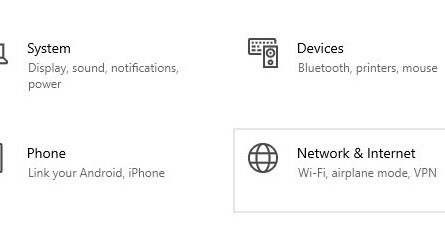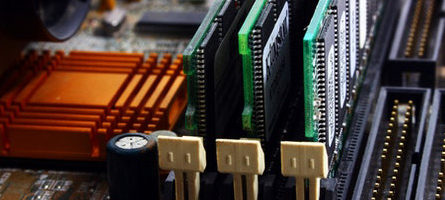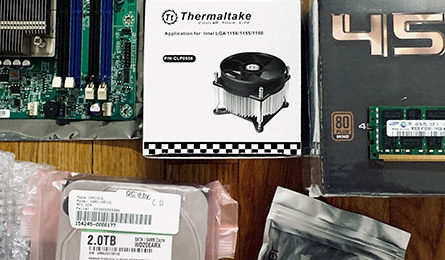 So you got your hardware set up, operating system installed, but now have no idea how to put it to good use (or justify it to your wife). No worries, in this post we will take a look at some of the more common services you can fire up, so follow along for some useful homelab ideas. These solution will also not break the bank, they’re all free!
So you got your hardware set up, operating system installed, but now have no idea how to put it to good use (or justify it to your wife). No worries, in this post we will take a look at some of the more common services you can fire up, so follow along for some useful homelab ideas. These solution will also not break the bank, they’re all free!
File Server
Probably the most common, and in my opinion one of the most useful services, is a local file server. Many of us now have multiple devices in the home: desktops, laptops, tablets, phones… the list goes on! Sharing files between devices can be annoying, but if you have centralized storage at home you can simply drop a file on the server and then be able to access it from any device.
Another huge benefit is expanded storage. Most laptops don’t have huge harddrives, neither do tablets or phones, and if you have tons of photos, videos, music or whatever it is you’re into, you may run out of storage quickly. If you set up a file server you can store all your media there instead, freeing up your other devices. And should you need to access your files while away from home, you can set up a VPN server and access everything as if you never left.
Media Server
If you have a growing collection of photos, videos/movies, or music you may want a more organized way to view it. Fortunately there are a number of good options for organizing your library for free. Most offer their core functionality without needing to pay a dime, however some use cases may benefit from the low cost subscriptions (ie. hardware acceleration). Plex seems to be one of the more refined and common media servers, which I deploy at home. Other good options include Kodi, Emby, and Jellyfin. Some do certain things better than others, so be sure to check them all out before settling on one (or host multiple, if you’re into that)!
Router/Firewall/Adblock
I’m bunching these all into one because pfSense does it all. Router, firewall, and adblock funtionality all under one roof sorta-speak. They do sell dedicated hardware with pfSense preinstalled, but it can be easily booted on your rig, for free. From pfSense:
“pfSense® software is a free, open source customized distribution of FreeBSD specifically tailored for use as a firewall and router that is entirely managed via web interface. In addition to being a powerful, flexible firewalling and routing platform, it includes a long list of related features and a package system allowing further expandability without adding bloat and potential security vulnerabilities to the base distribution.”
Another good option is Pi-hole, probably even more fun if you have a Raspberry Pie laying around. With Pi-hole you can block advertisements network wide and optionally you can use it as a DHCP server as well. It has an easy to use web interface and offers plenty of statistics so you can see what’s being blocked and what sites are being accessed most often. By blocking unwanted traffic you can minimize network utilization and speed up your browsing experience since all the junk will be filtered.
Virtualization
If you’re going to be running everything one machine, virtualization is a good option for separating the services… and the only option if you have one rig (let’s be real, most of us don’t have racks at home). It’s a good idea to separate services for stability and ease of maintenance. You don’t want to take the whole network down every time you need to reboot your media server and you don’t want a hiccup on one service crippling every other service.
There are a few options here: Microsoft Hyper-V, ESXi, KVM, VMware workstation. You can (and should) try them all, but ultimately you will have to decide which will work best for you. I’m not a big Linux guy and started my lab on Hyper-V, it’s fairly simple to set up and use. Check them all out, experiment, and see which you’re most comfortable with before settling on one. Another option worth mentioning is FreeNAS as it allows you to spin up virtual machines as well.
Home Automation
I don’t have much experience with home automation since all I have at home are a couple of HUE lights and an Alexa, but this is a project I hope to get more familiar with in the near future. If you have multiple smart devices at home (or even if you don’t), it could be helpful to be able to control them all from one centralized app. You can lower the temperature and turn off the lights when you go to bed or set the mood by adjusting the lights when watching a movie. There really are endless possibilities in my opinion. A popular open source option is Home Assistant. It integrates with most technologies, manufacturers, and requires very little system resources (you can install it on a Pi).
This is not meant to be an exhaustive list, I’m pretty sure no one can exhaust that list anyway! These are simply some of the most common homelab ideas for the home. Leave a comment below telling us what you’re deploying at home.
homelab101.com loves your feedback! If you enjoyed, hated, or have any suggestions for this post, please leave a comment below!



